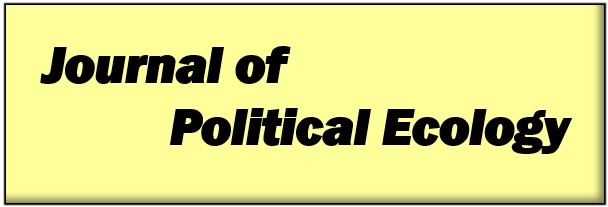Abstract
Estimates that 60% of emerging infectious diseases are zoonotic in origin, combined with recent high-profile zoonotic outbreaks like the COVID-19 pandemic, have the world scrambling to understand, predict, and prevent zoonotic disease risks and outbreaks. Scientists and public health officials draw attention to anthropogenic processes understood to contribute to these risks, such as the wildlife trade, climate change, deforestation, and urbanization. Rightly understood as a joint public health and human-environment challenge, what is being lost is an appreciation for the structural, systemic drivers of zoonotic disease risks, outbreaks, their spatialities, and related interventions. In this article, we articulate the need for this research and how political ecology can respond to it. Complementing existing work on political ecologies of health and disease, we develop a specific political ecology approach to examine the structural processes shaping the spatialities of zoonotic disease dynamics. This framework is intended to: 1. give critical attention to spatialities of animal-human-pathogen relations; 2. examine how and what political-economic, socio-cultural and other structural processes drive changes in these spatialities; and 3. investigate how changes in these spatialities intensify (or de-intensify) animal-human-pathogen relations and zoonotic risks. We use this framework to reconceptualize taken-for-granted and key components of zoonotic disease outbreaks – reservoirs, interfaces, and spillovers. We reframe reservoirs as bodies and landscapes that are spaces of zoonotic hazard; and interfaces as spaces of interspecies intimacy. From here, we explain why it is important to think about spillover not just as an event preceding an outbreak, but as a structured process that unfolds across space, time, and scale. Our intention is for others to enrich and advance this framework through application in different zoonotic disease contexts to critically examine how spaces of hazard, intimacy and spillover are shaped, and what this means for differentiated risks, vulnerabilities, and interventions.
Keywords: political ecology, disease, health, animal-human interfaces, zoonosis
How to Cite:
Massé, F. & Gladkova, E., (2025) “Spatializing zoonotic disease dynamics from a political ecology perspective: Reconceptualizing spillover as structure”, Journal of Political Ecology 32(1): 5810. doi: https://doi.org/10.2458/jpe.5810
Downloads:
Download PDF
View PDF
Funding
- Name
- GCRF, UK & Newton Fund
- Funding ID
- GCRF_NF94
- Name
- University of Birmingham
616 Views
271 Downloads


